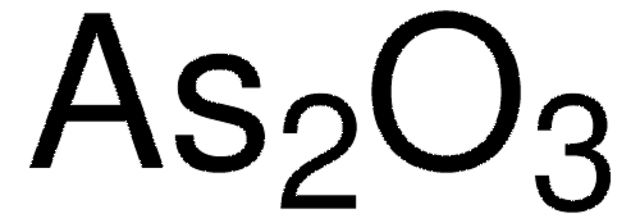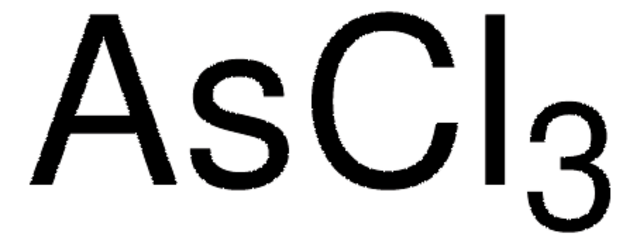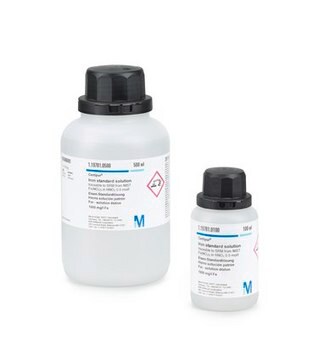311383
Arsenic(III) oxide
ACS reagent (primary standard)
Synonym(s):
Arsenic trioxide, Arsenous acid
About This Item
Recommended Products
grade
ACS reagent (primary standard)
vapor pressure
0 hPa ( 66 °C)
Assay
99.95-100.05%
form
powder
reaction suitability
reagent type: catalyst
core: arsenic
ign. residue
≤0.02%
solubility
dilute HCl: insoluble ≤0.01%
anion traces
S2-: passes test (lim. ~0.001%)
chloride (Cl-): ≤0.005%
cation traces
Fe: ≤5 ppm
Pb: ≤0.002%
Sb: ≤0.05%
SMILES string
O=[As]O[As]=O
InChI
1S/As2O3/c3-1-5-2-4
InChI key
IKWTVSLWAPBBKU-UHFFFAOYSA-N
Looking for similar products? Visit Product Comparison Guide
Related Categories
General description
Application
- In the synthesis of arsenic pentafluoride (AsF5) by static fluorination method in a closed system.
- In the preparation of arsenic-doped ZnO films by adding As2O3 to zinc acetate, 2-methoxyethanol, and monoethanolamine by sol-gel spin coating method.
Signal Word
Danger
Hazard Statements
Precautionary Statements
Hazard Classifications
Acute Tox. 2 Oral - Aquatic Acute 1 - Aquatic Chronic 1 - Carc. 1A - Eye Dam. 1 - Skin Corr. 1B - STOT RE 1
Target Organs
Respiratory system,Cardio-vascular system,Gastrointestinal tract
Storage Class Code
6.1A - Combustible acute toxic Cat. 1 and 2 / very toxic hazardous materials
WGK
WGK 3
Flash Point(F)
Not applicable
Flash Point(C)
Not applicable
Regulatory Listings
Regulatory Listings are mainly provided for chemical products. Only limited information can be provided here for non-chemical products. No entry means none of the components are listed. It is the user’s obligation to ensure the safe and legal use of the product.
EU REACH SVHC Candidate List
EU REACH Annex XVII (Restriction List)
EU REACH Annex XIV (Authorisation List)
Choose from one of the most recent versions:
Already Own This Product?
Find documentation for the products that you have recently purchased in the Document Library.
Customers Also Viewed
Our team of scientists has experience in all areas of research including Life Science, Material Science, Chemical Synthesis, Chromatography, Analytical and many others.
Contact Technical Service











